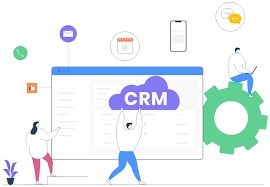In today's business landscape, managing contracts effectively is essential for success. Contracts are the lifeblood of any business, and a poorly managed contract can lead to costly mistakes, missed opportunities, and even legal issues. That's where Contract Lifecycle Management (CLM) comes in.
CLM is a system that helps organizations manage the entire lifecycle of a contract, from creation and negotiation to execution, renewal, and even termination. With CLM, businesses can streamline their contract management processes, reduce risks, and improve their bottom line. In this article, we'll take a closer look at CLM and provide a guide to implementing it in your organization.
What is Contract Lifecycle Management (CLM)?
Do you find the challenges of conventional contract management systems, such as cumbersome user interfaces, prolonged configurations, and inadequate integrations frustrating?
According to Gartner, there's a fifty percent chance that initial CLM implementations will not achieve anticipated benefits by 2024. This data highlights the significance of choosing the appropriate CLM solution, creating a well-defined implementation strategy, and involving all levels of the organization to guarantee successful adoption.
CLM is the process of managing a contract from inception to termination. It involves several stages, including the creation of the contract, negotiation, approval, execution, and renewal or termination. In addition, CLM involves tracking key contract milestones, such as expiration dates, renewal options, and payment schedules.
CLM can be used in a variety of industries, including healthcare, financial services, manufacturing, and government. It is particularly important in industries that rely heavily on contracts, such as construction, real estate, and telecommunications.
Why is Contract Lifecycle Management (CLM) Important?
CLM is crucial to many businesses. First, it can help organizations save time and money by streamlining their contract management processes. With CLM, businesses can automate many of the tasks associated with contract management, such as contract creation, approval, and tracking. This can free up valuable time and resources for other business-critical tasks.
Second, CLM can help organizations reduce risk. By tracking key contract milestones and ensuring that contracts are executed properly, CLM can help businesses avoid costly legal disputes and other issues that can arise from poorly managed contracts.
Finally, CLM can help organizations improve their bottom line. By negotiating better contract terms and reducing the time it takes to execute contracts, businesses can increase their revenue and reduce their expenses.
How to Implement Contract Lifecycle Management (CLM) in Your Organization
Implementing CLM in your organization involves several key steps. Here's a step-by-step guide to getting started:
Step 1: Define Your Contract Management Needs
The first step in implementing CLM is to define your contract management needs. This involves identifying the types of contracts your organization uses, the key milestones associated with those contracts, and the stakeholders involved in the contract management process.
Step 2: Choose a CLM Solution
Once you have defined your contract management needs, you can choose a CLM solution that meets those needs. There are many CLM solutions available on the market, each with its own set of features and capabilities. When choosing a CLM solution, consider factors such as ease of use, scalability, and cost.
Step 3: Configure Your CLM Solution
Once you have chosen a CLM solution, you will need to configure it to meet your organization's specific needs. This may involve customizing templates, defining workflows, and setting up alerts and notifications.
Step 4: Train Your Team
Once your CLM solution is configured, you will need to train your team on how to use it effectively. This may involve providing training materials, conducting training sessions, and offering ongoing support and guidance.
Step 5: Implement CLM Processes
With your CLM solution in place and your team trained, you can begin implementing CLM processes in your organization. This may involve creating new contracts using your CLM solution, tracking contract milestones, and managing renewals and terminations.
Step 6: Monitor and Improve Your CLM Processes
Finally, it's important to monitor and continually improve your CLM processes. This may involve tracking key performance indicators (KPIs) such as contract cycle time, compliance, and cost savings.
What a Robust Contract Lifecycle Management Offers
A robust CLM tool offers pre-built connections to major business apps, such as Salesforce, Hubspot, NetSuite, Slack, Coupa, OneTrust, Adobe Sign, and DocuSign, enabling you to seamlessly integrate your CLM procedures with the rest of your business. This enhances your workflow operations and increases efficiency, all without requiring weeks or months of configuration time.
A robust CLM tool like ConvergeHub comes with an exceptional product portfolio, which includes not only delightful products but also exceptional employees who ensure everything runs smoothly. We are committed to a customer-centric approach and believe that customers should expect more from their CLM solution. We strive to deliver on that vision.
Modern CLM tools are revolutionizing the concept of contract lifecycle management by consistently challenging the status quo, adopting an innovative approach, and propelling the industry forward.
Wrapping Up
Contract Lifecycle Management (CLM) is a crucial tool for businesses of all sizes, as it can significantly simplify and streamline the contract management process. The benefits of using a CLM tool are numerous, ranging from increased efficiency and productivity to improved risk management and compliance.


No comments yet